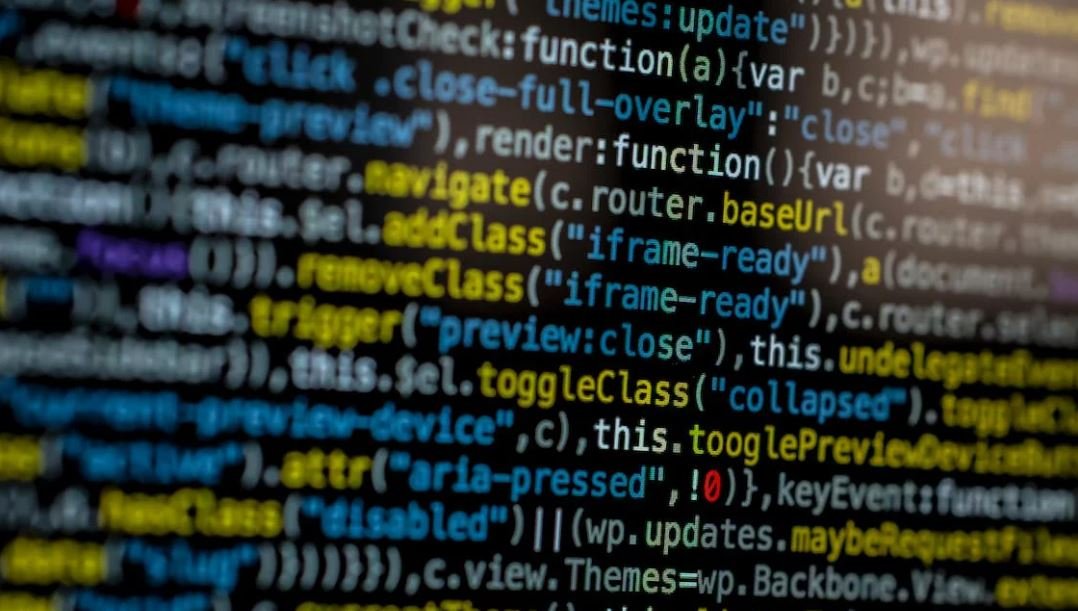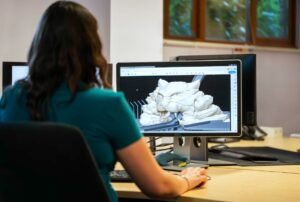Deepfake Photo Generator
Deepfake technology has been making headlines in recent years, raising concerns about the potential implications for society. With the rapid advancement of artificial intelligence (AI) and machine learning, it is now easier than ever to create realistic, fake photos and videos. This article explores the deepfake photo generator and its impact on various aspects of our lives.
Key Takeaways
- Deepfake technology uses AI and machine learning algorithms to create realistic fake photos.
- Deepfake photos can have numerous implications, including privacy concerns, misinformation, and fake news.
- Awareness and education about deepfakes are crucial to prevent their misuse and potential harm.
**Deepfake photo generators** utilize sophisticated AI algorithms to manipulate images, seamlessly swapping faces or altering features. These advanced algorithms analyze vast amounts of training data, enabling them to learn and replicate human features with remarkable accuracy. *The resulting deepfake photos can be difficult to distinguish from real ones.*
The Dark Side of Deepfake Photos
Deepfake photos, while fascinating from a technological perspective, raise numerous concerns regarding privacy, security, and the spread of misinformation. *This emerging technology has the potential to damage reputations, contribute to the spread of fake news, and breach personal privacy.* The malicious use of deepfakes can lead to the creation of false evidence, targeted harassment, and manipulation of public perception.
Practical Applications of Deepfake Photo Generators
While deepfake photo generators have mainly garnered attention for their negative implications, there are potential positive applications as well. Researchers and artists can use this technology to create realistic digital avatars for movies, video games, and other forms of entertainment. Additionally, deepfake photo generators can facilitate historical and cultural preservation by restoring old, damaged photographs with remarkable precision.
Efforts to Combat Deepfake Technology
Recognizing the potential harm that deepfake technology can inflict on society, efforts are being made to mitigate its negative impact. Organizations and researchers are developing detection tools and algorithms to identify deepfake photos and videos. Governments and social media platforms are also exploring ways to regulate and detect deepfakes to prevent their misuse and the spread of misinformation.
Examples of Deepfake Photo Misuse
The misuse of deepfake photos has already caused significant harm in various instances. Here are a few notable examples:
| Example | Description |
|---|---|
| Political Manipulation | Deepfake photos have been used to create false images of political leaders, spreading misinformation and manipulating public opinion. |
| Revenge Porn | Deepfake technology has been misused to create explicit fake photos of individuals, causing emotional distress and damaging reputations. |
Legal and Ethical Considerations
The rise of deepfake technology has sparked a discussion regarding its legal and ethical implications. Questions such as the violation of consent, regulations surrounding the use of deepfakes, and the responsibility of platforms to address the issue are all being debated. Organizations and governments are working towards establishing guidelines and legislation to address these concerns.
Future Outlook
As deepfake technology continues to advance, it is essential for individuals, organizations, and governments to stay vigilant and proactive in combating the potential harm it can cause. *An ongoing effort to develop effective detection methods and increase public awareness about deepfakes will be crucial in mitigating their negative impact.* By addressing these challenges collectively, we can strive for a future where technology such as deepfake photo generators is used responsibly and for the betterment of society.

Common Misconceptions
Deepfake Photo Generator
There are several common misconceptions surrounding the topic of deepfake photo generators. These misconceptions often lead to confusion and fear among the general public. It is important to address and clarify these misconceptions to promote a better understanding of the technology and its potential impacts.
- Deepfake photo generators are solely used for deceptive purposes.
- People believe that it is impossible to detect deepfake generated photos.
- The technology is believed to be highly sophisticated and accessible only to experts.
Contrary to popular belief, deepfake photo generators are not exclusively used for deceptive purposes. While there have been instances of deepfakes being used to spread misinformation or defame individuals, the technology itself has various legitimate and beneficial applications as well.
- Deepfake photo generators can be used in the entertainment industry for visual effects and creating realistic virtual characters.
- The technology also has potential applications in fields like education and art, enabling the creation of historical reenactments and imaginative visual content.
- Deepfake photo generators can be used for improving privacy by generating realistic avatars to represent individuals in online platforms while preserving their anonymity.
Another common misconception is that it is impossible to detect deepfake generated photos. While deepfakes have become increasingly sophisticated, researchers and technology developers are continuously working on improving detection algorithms and tools to identify manipulated images.
- Advancements in artificial intelligence and machine learning techniques enable the development of more accurate deepfake detection models.
- Experts are collaborating to create databases of deepfake images and videos to further improve detection algorithms.
- Emerging technologies like blockchain can potentially play a role in verifying the authenticity of photos, making it harder for deepfakes to go undetected.
Lastly, many people assume that deepfake photo generators are highly sophisticated and accessible only to experts. While creating high-quality deepfakes may require advanced knowledge and skills, there are tools and platforms available that make it relatively easy for anyone to generate basic deepfake photos.
- Various software and online platforms offer user-friendly interfaces that allow individuals with little technical expertise to create basic deepfake photos.
- Tutorials and guides are readily available online, making it easier for beginners to start experimenting with deepfake technology.
- As the technology progresses, it is likely that the creation of deepfake photos will become even more accessible to the general public.

Table: Social Media Platforms Growth
In recent years, social media platforms have experienced exponential growth. This table presents the number of monthly active users (MAU) for some popular platforms, showcasing their widespread adoption.
| Platform | MAU (in millions) |
|---|---|
| 2,700 | |
| 1,200 | |
| 330 | |
| 756 | |
| TikTok | 689 |
Table: Deepfake Implications
The rise of deepfake technology has raised concerns in various sectors. Here, we explore some potential implications of this technology in different areas.
| Area | Implication |
|---|---|
| Politics | Manipulation of public opinion through fake videos |
| Entertainment | Ability to create realistic virtual characters in movies |
| Journalism | Spreading false information through fabricated news videos |
| Identity Theft | Potential misuse of deepfake technology for fraudulent purposes |
Table: Deepfake Detection Techniques
Safeguarding against the manipulation of deepfakes requires robust detection methods. This table outlines some common techniques used for identifying deepfake content.
| Technique | Description |
|---|---|
| Facial Analysis | Examining facial inconsistencies and unnatural movements |
| Audio Analysis | Detecting inconsistencies in speech patterns and audio quality |
| Source Verification | Assessing the credibility and origin of the video source |
| Metadata Analysis | Examining hidden data within the video file |
Table: Ethical Concerns of Deepfakes
Deepfake technology brings about ethical considerations that need to be addressed. Here, we highlight some key concerns raised by the usage of deepfake content.
| Concern | Description |
|---|---|
| Privacy Invasion | Violation of individuals’ privacy rights through unauthorized use of their likeness |
| Misinformation | Spreading false information and manipulating public perception |
| Reputation Damage | Potential harm caused to individuals due to the creation of fabricated videos |
| Legal Implications | Challenges in identifying responsibility and establishing legal consequences |
Table: Deepfakes in the News
The media frequently covers instances related to deepfakes. The following table highlights some notable news stories related to deepfake content.
| News Story | Date | Source |
|---|---|---|
| Deepfake AI creates convincing Tom Cruise impersonations | March 2021 | CNN |
| Prominent politician falls victim to deepfake smear campaign | June 2020 | The New York Times |
Table: Deepfake Public Awareness
Understanding the level of public awareness regarding deepfake technology is crucial. This table presents data on the awareness of deepfakes among different demographics.
| Demographic | Awareness Level |
|---|---|
| 18-24 years old | 67% |
| 25-34 years old | 55% |
| 35-44 years old | 42% |
Table: Deepfake Regulations
Given the potential risks associated with deepfakes, numerous countries have explored the implementation of regulations. Here, we identify some countries with existing or proposed legislation concerning deepfake content.
| Country | Status of Regulation |
|---|---|
| United States | Proposed legislation under review |
| China | Existing regulations with penalties for distributing deepfakes without disclosure |
| United Kingdom | Proposed legislation under development |
Table: Deepfake Countermeasure Technologies
In response to the threats posed by deepfakes, various organizations are developing countermeasure technologies. This table provides an overview of some technologies being researched or implemented.
| Technology | Description |
|---|---|
| Blockchain | Using decentralized ledger systems to verify authenticity |
| Machine Learning Algorithms | Developing AI models to detect manipulated media |
| Watermarking | Embedding invisible marks in media to verify originality |
Table: Deepfake Impact on Trust
The rise of deepfakes poses challenges to the trust we place in media and digital content. The table below illustrates how the creation and dissemination of deepfakes affects trust in different domains.
| Domain | Impact on Trust |
|---|---|
| Journalism | Erosion of trust in news sources and reliability |
| Politics | Doubt cast on the authenticity of political statements and speeches |
| Entertainment Industry | Concerns over the legitimacy of performances and celebrity endorsements |
Conclusion
Deepfake technology has emerged as a powerful tool with the potential to manipulate information, threaten privacy, and damage trust in society. It has found applications in various fields, and its detection and regulation remain urgent. To mitigate the risks associated with deepfakes, it is crucial to raise public awareness, develop reliable detection methods, and establish appropriate legal and ethical frameworks. The battle against deepfakes requires collective efforts to ensure the responsible and ethical use of this technology in the future.
Frequently Asked Questions
What is a deepfake photo generator?
A deepfake photo generator is an advanced technology that uses artificial intelligence (AI) algorithms to manipulate and alter images, making them appear real despite being fake or synthesized.
How does a deepfake photo generator work?
A deepfake photo generator works by using deep learning algorithms to analyze and understand existing images, and then it generates new images based on that understanding. It can seamlessly blend different facial features, expressions, and other characteristics from various sources to create a realistic but artificial image.
What are the potential uses of deepfake photo generators?
Deepfake photo generators have both positive and negative potential uses. Some positive applications include entertainment, digital art, and visual effects in movies. However, they can also be misused for spreading misinformation, identity theft, or maliciously manipulating images for various purposes.
Is it legal to use a deepfake photo generator?
The legality of using a deepfake photo generator varies depending on the jurisdiction and the intention behind its usage. Creating deepfakes with malicious intent can potentially violate privacy laws, intellectual property rights, and spread disinformation. It is essential to comply with local laws and ethical guidelines when using such technologies.
How can I detect if an image has been created using a deepfake photo generator?
Detecting deepfake images can be challenging as these technologies are becoming increasingly sophisticated. However, there are certain techniques and tools available that use forensic analysis or deep learning algorithms to identify potential signs of deepfakes, such as unnatural facial movements, inconsistencies, or artifacts in the images.
What are the ethical concerns surrounding deepfake photo generators?
Deepfake photo generators raise several ethical concerns. They can be used to deceive or manipulate people, contribute to the spread of fake news, enable non-consensual pornography, or harm an individual’s reputation. It is crucial to address these concerns and establish guidelines to prevent misuse of this technology.
Are there any regulations in place to control the use of deepfake photo generators?
Currently, regulations regarding the use of deepfake photo generators vary across different countries. Some jurisdictions have implemented laws related to privacy, intellectual property, or digital manipulation, but there is no comprehensive global framework for deepfake regulations yet. Researchers, policymakers, and technology companies are actively working on addressing this concern.
Can deepfake photo generators be used positively in the future?
While deepfake photo generators have raised numerous ethical concerns, they also offer potential positive applications. In the future, they could be used for improved visual effects in movies, creating lifelike avatars for virtual reality experiences, or enhancing creative digital art. Responsible development and usage are necessary to harness these technologies for beneficial purposes.
What are the possible risks associated with deepfake photo generators?
Deepfake photo generators pose several risks, primarily related to privacy, cybersecurity, and trust. The technology could be exploited for various malicious activities, resulting in the spread of misinformation, fake identities, or blackmail. Additionally, the credibility of genuine images and videos might be threatened, leading to skepticism and eroding public trust.
Where can I find more information about deepfake photo generators?
To learn more about deepfake photo generators and stay updated on the latest research, developments, and discussions surrounding the topic, you can refer to reputable academic sources, news articles, or visit official websites of organizations working in the field of AI ethics and digital manipulation.




